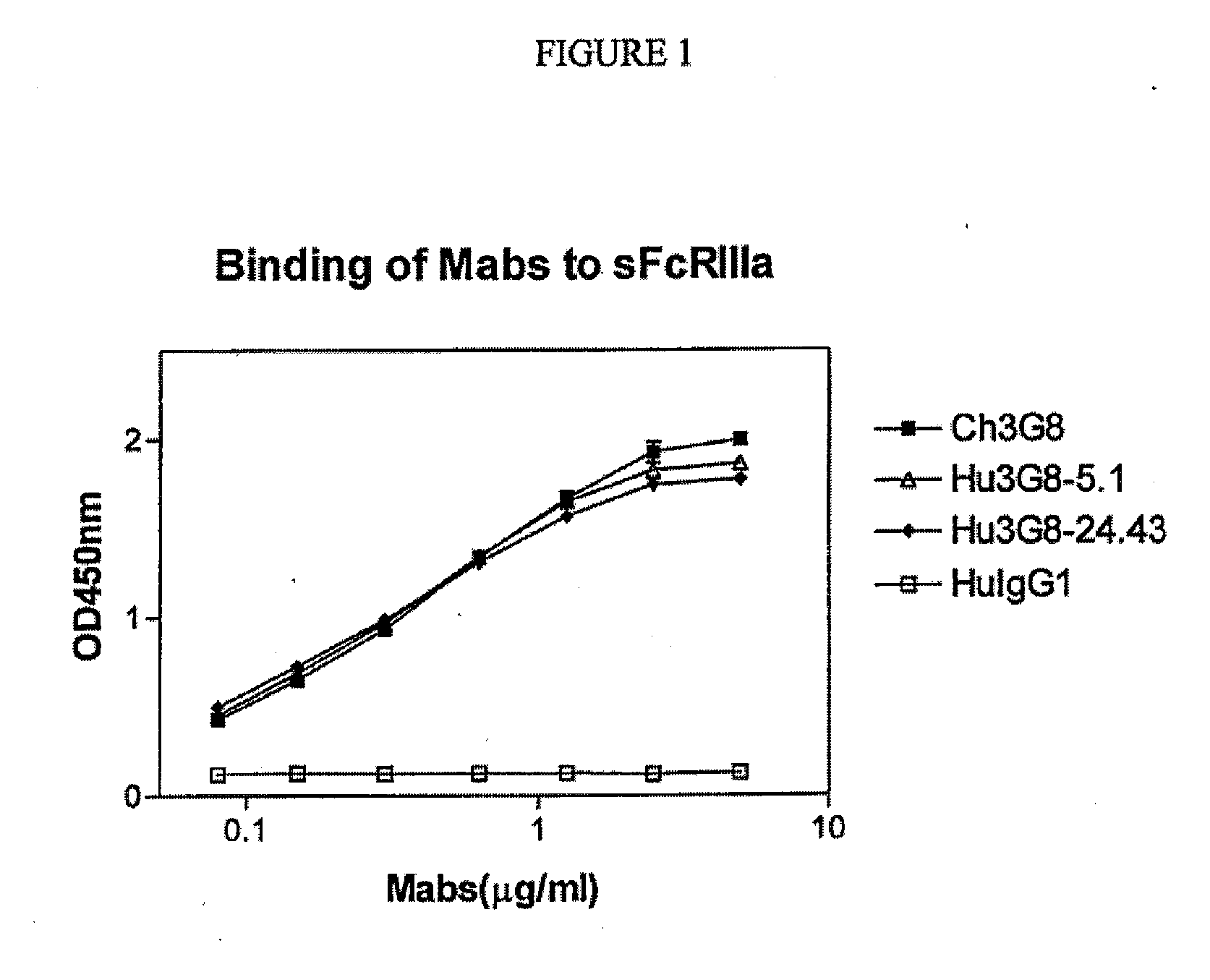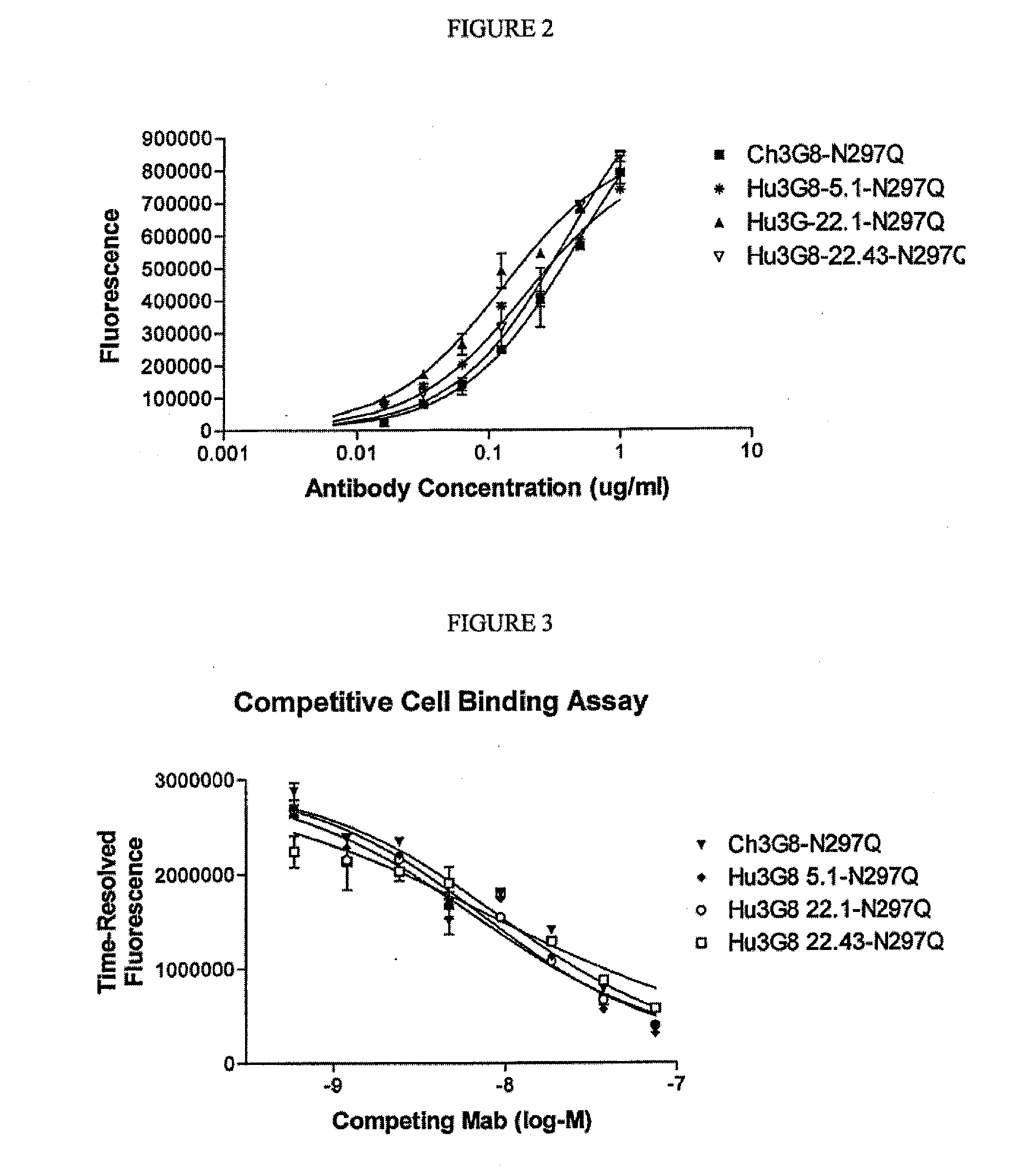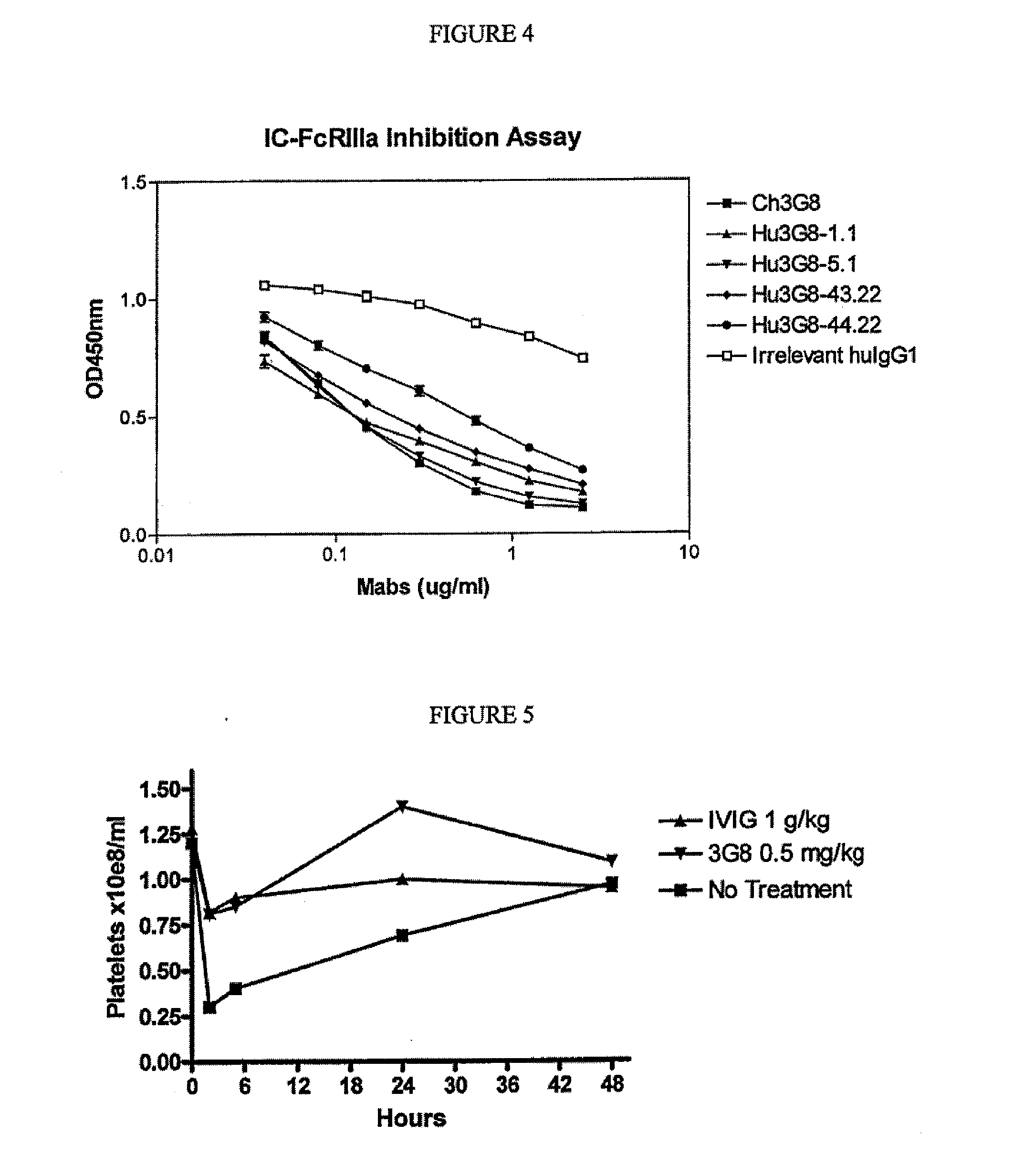CD16A Binding Proteins and Use for the Treatment of Immune Disorders
a technology of cd16a and binding proteins, applied in the field of immunology, can solve problems such as the elimination of inflammatory response in subjects, and achieve the effect of improving the therapeutic effect in treating
- Summary
- Abstract
- Description
- Claims
- Application Information
AI Technical Summary
Benefits of technology
Problems solved by technology
Method used
Image
Examples
example 1
Mouse 3G8 VH and VL and Chimeric Molecules Generated Therefrom
A) Mouse 3G8 VH and VL
[0138] The cDNA encoding the mouse 3G8 antibody light chain was cloned. The sequence of the 3G8 antibody heavy chain was provided by Dr. Jeffry Ravetch. The amino acid sequences of the 3G8 VH and VL are provided in Tables 4 and 5, infra. Nucleic acid sequences encoding the variable regions are:
SEQ ID NO: 1 {3G8VH}CAGGTTACTCTGAAAGAGTCTGGCCCTGGGATATTGCAGCCCTCCCAGACCCTCAGTCTGACTTGTTCTTTCTCTGGGTTTTCACTGAGGACTTCTGGTATGGGTGTAGGCTGGATTCGTCAGCCTTCAGGGAAGGGTCTAGAGTGGCTGGCACACATTTGGTCGGATGATGACAAGCGCTATAATCCAGCCCTCAAGAGCCGACTGACAATCTCCAACGATACCTCCAGCAACCAGGTATTCCTCAAAATCGCCAGTGTGGACACTGCAGATACTGCCACATACTACTGTGCTCAAATAAACCCCGCCTGGTTTGCTTACTGGGGCCAAGGGACTCTGGTCACTGTCTCTGCASEQ ID NO: 3 {3G8VL}GACACTGTGCTGACCCAATCTCCAGCTTCTTTGGCTGTGTCTCTAGGGCAGAGGGCCACCATCTCCTGCAAGGCCAGCCAAAGTGTTGATTTTGATGGTGATAGTTTTATGAACTGGTACCAACAGAAACCAGGACAGCCACCCAAACTCCTCATCTATACTACATCCAATCTAGAATCTGGGATCCCAGCCAGGTTTAGTGCCAGTGCGTCTGGGACAG...
example 2
Humanized Anti-CD16A Binding Proteins
A) Humanized Heavy Chain
[0144] CDR encoding sequences from the mouse 3G8 VH clone were fused to framework sequences derived from the human germline VH sequence VH2-70 to create a polynucleotide encoding a VH designated Hu3G8VH . The polynucleotide was generated by an overlapping PCR procedure. In a first step, using the primers and strategy shown below and the mouse 3G8 VH polynucleotide (SEQ ID NO:1) as template.
SJ32r SJ34r SJ35r ----------------------------------------------------------------------------- SacI → → → SJ30f SJ31f SJ33f SJ29fEcoRIPrimerLengthSequenceSeq ID No:SJ29f62ccg cga att ctG GCC AGG TTA CCC TGA GAG7AGT CTG GCC CTG CGC TGG TGA AGC CCA CACAGSJ3...
example 3
Variant CD16A Binding Proteins
[0152] Additional expression constructs were made in which sequence changes were introduced in the VL or VH domains by site directed mutagenesis. A typical mutagenesis reaction contained 10 ng plasmid DNA (isolated from a methylation competent strain of E. coli), 125 ng each of a forward and reverse primer, each containing the mutation of interest, reaction buffer, and dNTPs in 0.05 ml volume. 2.5 units of PfuTurbo DNA polymerase (Stratagene) was added and the reaction was subjected to 15 cycles of 95°, 30 sec; 55°, 1 min; 68°, 12 min. The product of the PCR was then digested with DpnI endonuclease and the restricted DNA was used to transform E. coli strain XL-10 gold. Because DpnI only digests methylated DNA it will digest the parental, non-mutated, plasmid leaving the newly synthesized non-methylated product, containing the mutation of interest, as the predominant species.
[0153] The sequences of the variant VH domains are shown in Table 4. The seque...
PUM
| Property | Measurement | Unit |
|---|---|---|
| time | aaaaa | aaaaa |
| time | aaaaa | aaaaa |
| volume | aaaaa | aaaaa |
Abstract
Description
Claims
Application Information
 Login to View More
Login to View More - R&D
- Intellectual Property
- Life Sciences
- Materials
- Tech Scout
- Unparalleled Data Quality
- Higher Quality Content
- 60% Fewer Hallucinations
Browse by: Latest US Patents, China's latest patents, Technical Efficacy Thesaurus, Application Domain, Technology Topic, Popular Technical Reports.
© 2025 PatSnap. All rights reserved.Legal|Privacy policy|Modern Slavery Act Transparency Statement|Sitemap|About US| Contact US: help@patsnap.com



